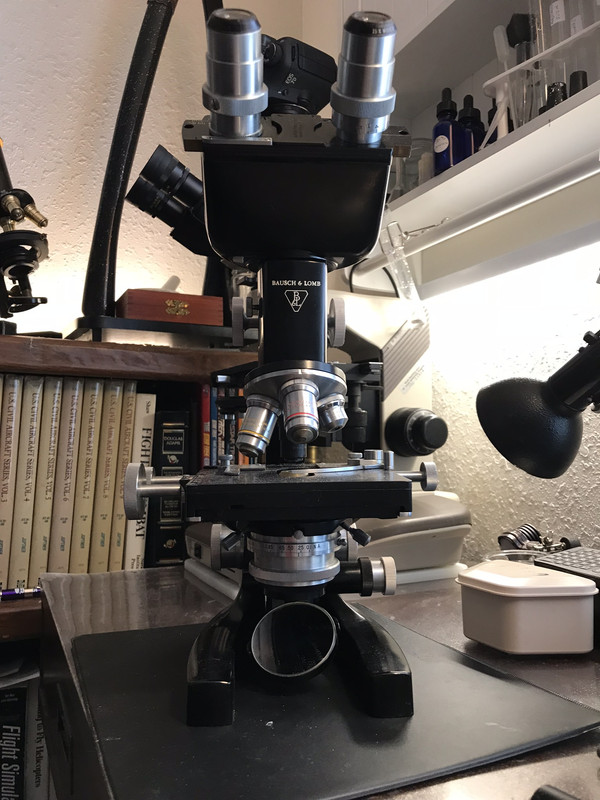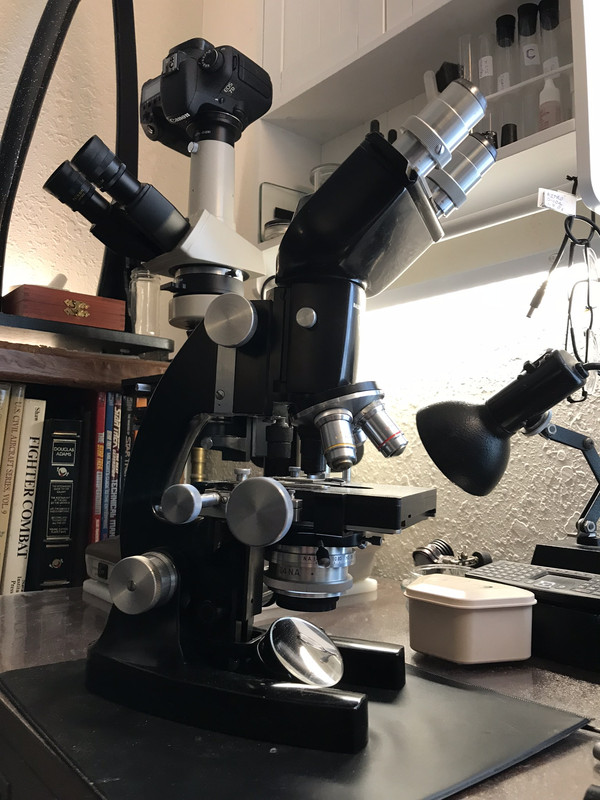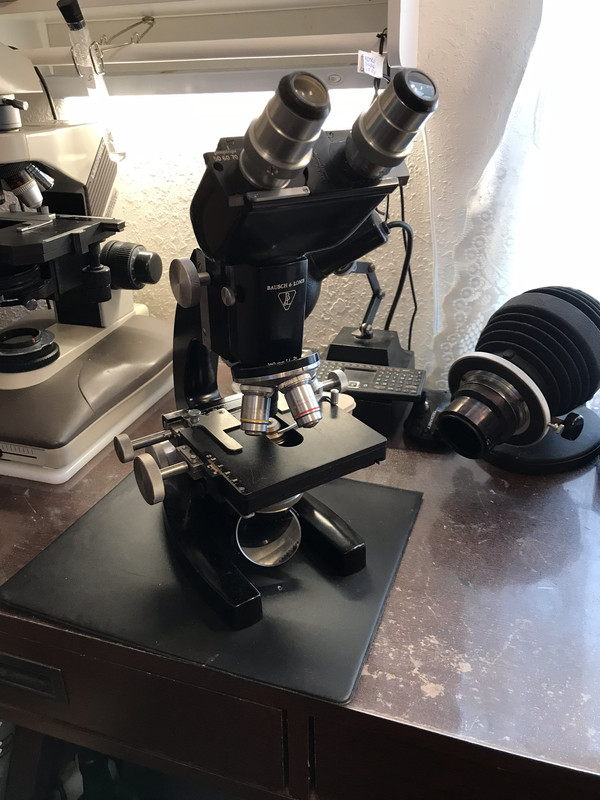There is a small knob on the side of the tube, that lets the head rotate where it sits atop the tube.
Apo, the condenser let’s you match the numerical aperture to what’s printed on the objectives.
Makes a difference at high magnification, but my old eyes can barely see it.

Actually I just play with these vintage scopes. For serious work I use the Nikon or the Axioskop, but these tickle all of my senses and are just fun to use and muse about.
And you are right, Apo I gotta admit I’m really enamored of these early to mid 20th Century American pivot based stands.
I have a few Spencer’s as well, but you can get a model 13 and a model 33 and you have about 30 years covered with those.






